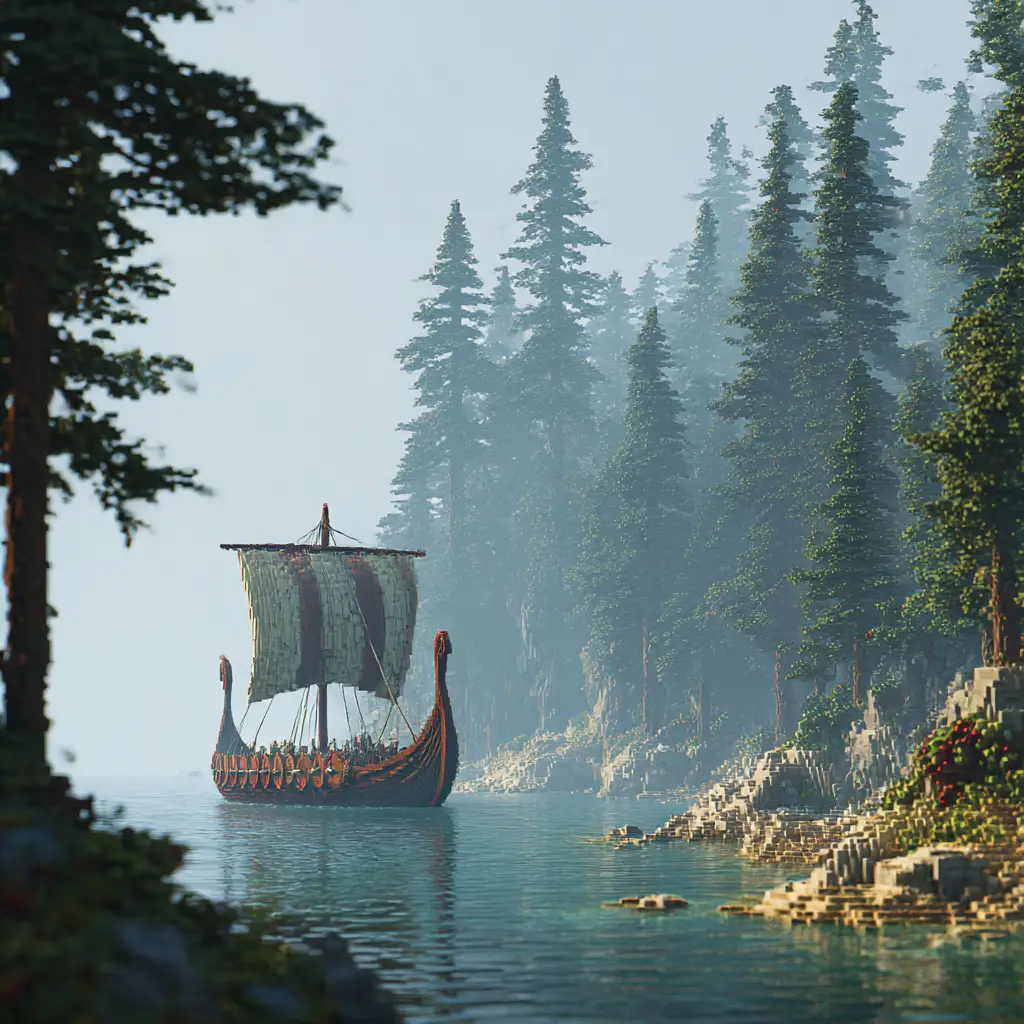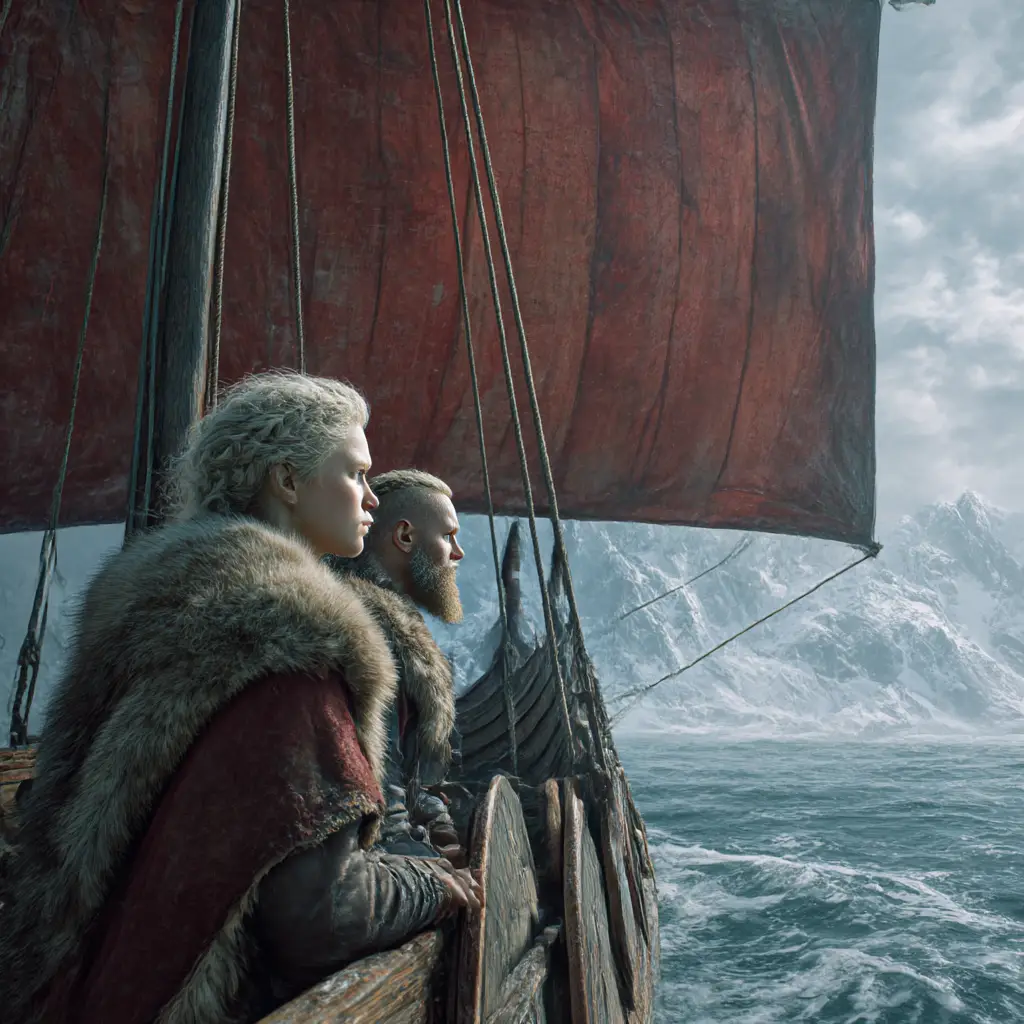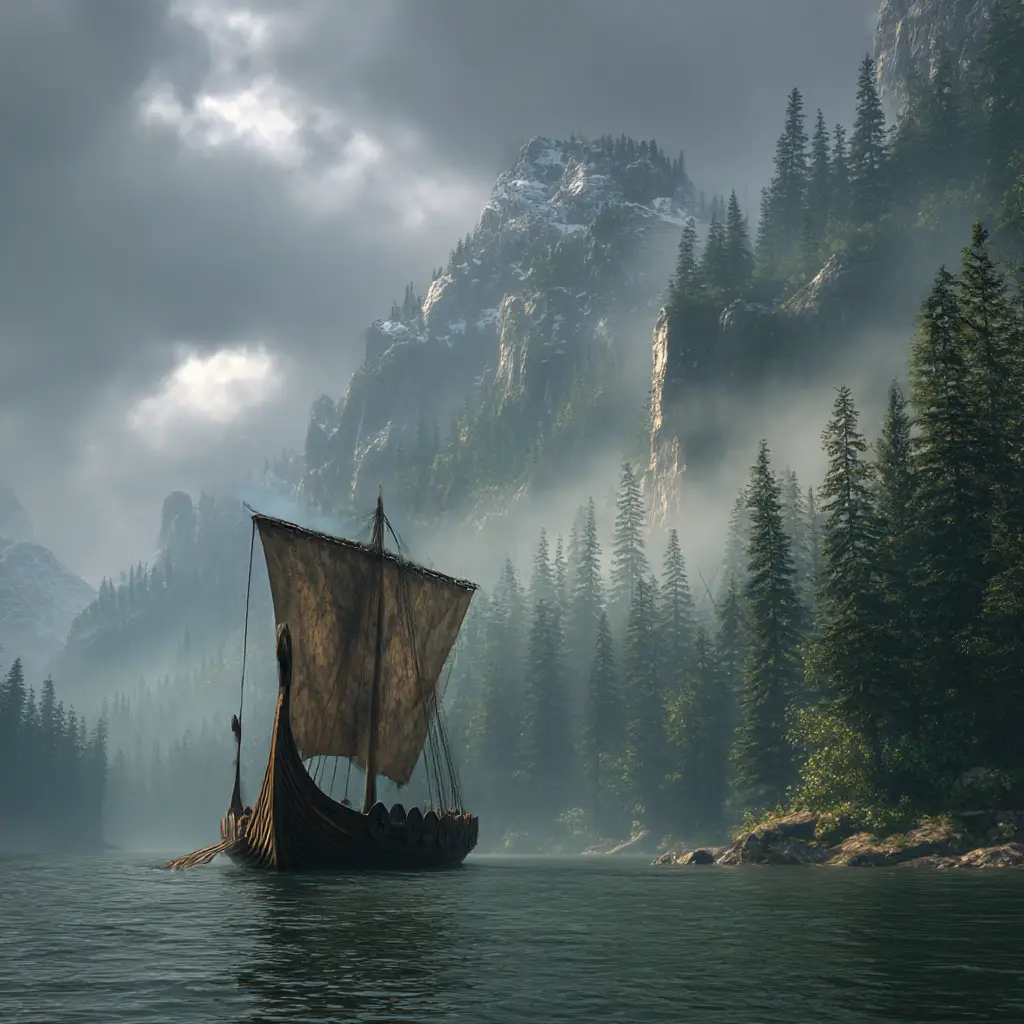The Saga of the Greenlanders (Grœnlendinga Saga) is one of two key medieval Icelandic sagas recounting the legendary Viking exploration of North America. Alongside The Saga of Erik the Red, it offers a gripping account of how Norse seafarers set out from Greenland and became the first Europeans to reach what they called Vinland, centuries before Columbus.
Origins of the Saga
Written down in the 13th century, The Saga of the Greenlanders draws on oral traditions passed down through generations of Norse settlers in Iceland and Greenland. While its exact authorship remains unknown, the saga reflects the adventurous spirit and maritime skill of the Viking Age, as well as the challenges of exploring new worlds.
Key Figures
- Leif Erikson – Often credited as the first European to set foot in North America, Leif discovers Vinland after being blown off course on his way to Greenland.
- Thorvald Erikson – Leif’s brother, who leads a subsequent expedition but is killed in a skirmish with Indigenous peoples.
- Freydis Eiriksdottir – Leif’s half-sister, known for her bold and ruthless leadership during an expedition that ends in betrayal and bloodshed.
- Thorfinn Karlsefni – A wealthy Icelandic trader who attempts to establish a permanent Norse settlement in Vinland with his wife, Gudrid.
The Voyage and Discoveries
The saga describes a series of voyages from Greenland to lands westward, detailing the explorers’ encounters with new environments, natural resources, and native inhabitants. These lands include:
- Helluland – Thought to be Baffin Island, characterised by its flat stones.
- Markland – Likely Labrador, described as forested and rich in timber.
- Vinland – A lush, fertile land named for its wild grapes, possibly located around Newfoundland.
Encounters and Challenges
The Norse explorers face various challenges:
- Harsh weather and difficult navigation across the North Atlantic.
- Encounters with Indigenous peoples, referred to as Skrælings in the saga, which range from tentative trade to violent conflict.
- The logistical difficulties of sustaining settlements far from their homelands.
Legacy and Impact
Though the Norse expeditions to Vinland did not result in lasting European colonisation, the voyages stand as a remarkable testament to Viking exploration and maritime prowess. The saga has inspired centuries of interest in Norse history and has contributed to the recognition of Leif Erikson as a pioneering explorer of the Americas.
Today, archaeological evidence at sites like L’Anse aux Meadows in Newfoundland supports key elements of the saga’s narrative, confirming the Vikings’ presence in North America around 1000 AD.


